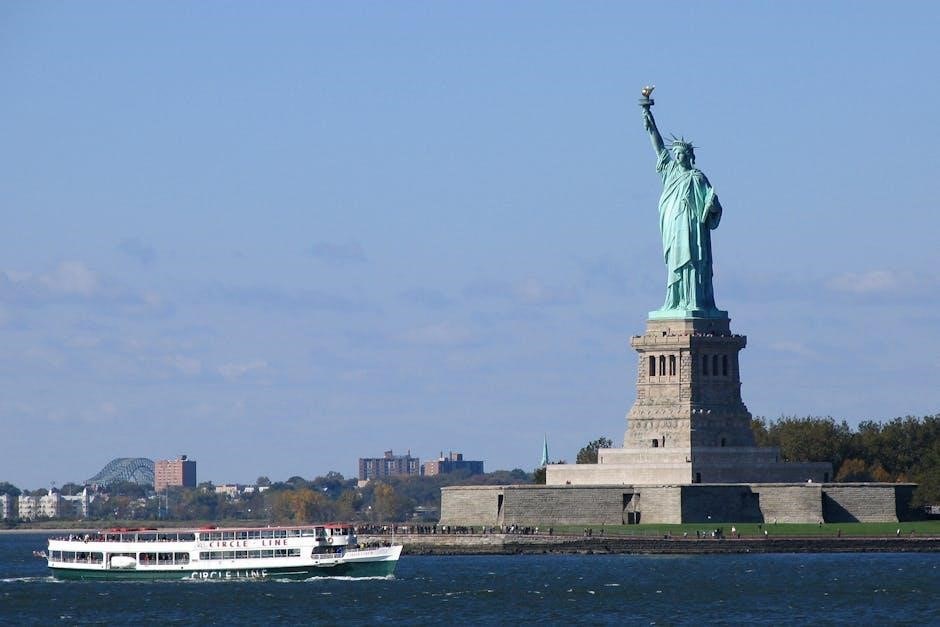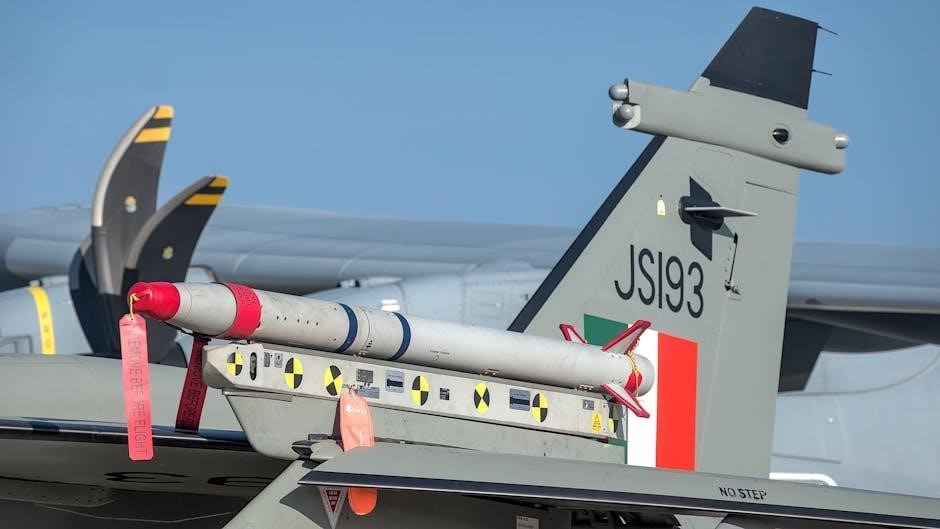Overview of the USS Hopper (DDG-70)

The USS Hopper (DDG-70) is a Flight I Arleigh Burke-class destroyer, commissioned in 1997, homeported at Pearl Harbor, and excels in multi-mission operations with advanced Aegis capabilities․
The USS Hopper (DDG-70) is a Flight I Arleigh Burke-class guided missile destroyer, named after Rear Admiral Grace Murray Hopper, a pioneering computer scientist who revolutionized naval technology․ Commissioned in 1997, the ship honors her legacy as a trailblazer in computing and naval innovation․ Equipped with the advanced Aegis Combat System and SPY-1D radar, the USS Hopper plays a critical role in multi-domain operations, showcasing the U․S․ Navy’s commitment to technological superiority and maritime security․ Its namesake reflects the blending of innovation and strength in modern naval capabilities․
Namesake: Rear Admiral Grace Murray Hopper
Rear Admiral Grace Murray Hopper was a trailblazing computer scientist and Navy officer who pioneered advancements in programming and software development․ Known as the “Queen of Code,” she developed the first compiler and played a crucial role in creating the COBOL programming language․ The USS Hopper honors her legacy as a visionary whose contributions transformed naval technology and operations․ She remains an inspiration for innovation and leadership in the U․S․ Navy, symbolizing the integration of technological excellence and maritime strength․
Construction and Commissioning
The USS Hopper (DDG-70) was constructed by Bath Iron Works, with its keel laid on February 23, 1995, launched on January 6, 1996, and commissioned on September 6, 1997․
Construction Timeline: Keel Laying to Commissioning
The USS Hopper (DDG-70) began its construction journey with the keel laying on February 23, 1995, at Bath Iron Works in Maine․ The ship was launched on January 6, 1996, marking a significant milestone in its development․ After a thorough outfitting and testing phase, the destroyer was officially commissioned into the U․S․ Navy on September 6, 1997․ This timeline highlights the efficient construction process that brought the advanced Arleigh Burke-class destroyer into active service․

Shipyard and Builders: Bath Iron Works
The USS Hopper (DDG-70) was constructed by Bath Iron Works (BIW) in Bath, Maine, a renowned shipyard with a long history of building advanced naval vessels․ BIW specializes in producing Arleigh Burke-class destroyers, leveraging cutting-edge technology and skilled craftsmanship․ The ship’s keel was laid on February 23, 1995, and it was launched on January 6, 1996․ Bath Iron Works’ expertise ensured the destroyer met the Navy’s high standards for performance and reliability, culminating in its successful commissioning on September 6, 1997․

Technical Specifications and Capabilities
The USS Hopper (DDG-70) is a Flight I Arleigh Burke-class destroyer, equipped with the Aegis Combat System and SPY-1D radar, featuring advanced missile defense and multi-mission capabilities․
Armament and Defensive Systems
The USS Hopper (DDG-70) is equipped with a range of advanced armament and defensive systems, including the Aegis Combat System and SPY-1D radar for superior missile defense․ It carries SM-2 and SM-3 surface-to-air missiles, as well as Harpoon anti-ship missiles, providing multi-layered defense capabilities․ The destroyer is also armed with a 5-inch Mk 45 gun for surface engagements and two Phalanx CIWS systems for close-range defense against missiles and aircraft․ Additionally, it features Mk 50 torpedoes for anti-submarine warfare, ensuring versatility in various combat scenarios․
Propulsion and Performance
The USS Hopper (DDG-70) is powered by four General Electric LM2500-30 gas turbines, delivering a combined 100,000 horsepower․ This advanced propulsion system enables the destroyer to achieve speeds exceeding 30 knots․ With a range of approximately 4,400 nautical miles, the ship demonstrates exceptional endurance for sustained operations at sea․ Its maneuverability and propulsion efficiency make it a formidable asset in modern naval operations, ensuring rapid response and versatility in diverse mission scenarios․
Radar and Combat Systems: Aegis and SPY-1D
The USS Hopper (DDG-70) is equipped with the advanced Aegis Combat System, which integrates the SPY-1D multi-function passive phased array radar․ This system provides unparalleled situational awareness, enabling simultaneous tracking of multiple air, surface, and subsurface targets․ The SPY-1D radar offers 360-degree coverage and exceptional detection range, enhancing the ship’s ability to engage threats with precision-guided missiles․ This cutting-edge technology ensures the USS Hopper excels in air defense, anti-submarine warfare, and anti-surface operations, making it a critical asset in modern naval combat scenarios․

Operational History
The USS Hopper (DDG-70) has actively served in various maritime operations, showcasing its versatility in multi-role missions and contributing to global security and stability since its commissioning․
Notable Deployments and Missions
The USS Hopper (DDG-70) has participated in numerous significant operations, demonstrating its capability as a multi-mission destroyer․ It has conducted maritime security operations in the Indian Ocean and the South China Sea, ensuring regional stability․ In 2006, the ship refueled alongside the USS Enterprise (CVN-65) during a deployment․ The Hopper has also been involved in exercises promoting international cooperation and readiness․ Its versatility and advanced systems make it a key asset in various operational scenarios, supporting U․S․ Navy global objectives effectively․
Modernization and Maintenance Efforts
The USS Hopper (DDG-70) has undergone significant modernization to maintain its operational readiness․ In March 2025, it successfully undocked from Dry Dock 4 at Pearl Harbor Naval Shipyard after a period of vital upgrades․ These efforts included enhancements to its combat systems and infrastructure to ensure alignment with evolving naval requirements․ The ship also benefits from regular maintenance programs, extending its service life and capability to support U․S․ Navy missions globally․ Such initiatives underscore the Navy’s commitment to sustaining the Arleigh Burke-class destroyers as key assets in modern maritime operations․

Homeport and Crew
The USS Hopper (DDG-70) is homeported at Joint Base Pearl Harbor-Hickam, Hawaii, and manned by a dedicated crew of sailors ensuring its operational readiness and effectiveness․
Current Homeport: Joint Base Pearl Harbor-Hickam
The USS Hopper (DDG-70) is currently homeported at Joint Base Pearl Harbor-Hickam, Hawaii, a strategic location that enhances its operational readiness in the Asia-Pacific region․ This historic naval base provides access to deep-water ports, advanced facilities, and extensive training areas․ The crew benefits from Hawaii’s unique environment, which offers a balance of duty and quality of life․ The base’s proximity to critical maritime routes underscores the destroyer’s role in maintaining regional security and stability․
Crew Composition and Life Onboard

The USS Hopper (DDG-70) is manned by a highly trained crew of approximately 380 personnel, including officers and enlisted sailors․ Life onboard is demanding yet rewarding, with a focus on operational readiness and teamwork․ The destroyer features modern living quarters, dining facilities, and recreational spaces to support crew morale․ Sailors have access to fitness equipment, libraries, and entertainment options to maintain well-being during deployments․ The ship’s community fosters camaraderie, with shared responsibilities and a commitment to mission success․

Arleigh Burke Class Overview

The Arleigh Burke-class destroyers are multi-role warships centered around the Aegis Combat System and SPY-1D radar, excelling in air defense, missile defense, and surface warfare capabilities․
Class Characteristics and Role in the U․S․ Navy
The Arleigh Burke-class destroyers are the backbone of the U․S․ Navy’s surface fleet, designed for multi-role operations including air defense, anti-submarine warfare, and surface combat․ Equipped with the Aegis Combat System and SPY-1D radar, these ships excel in detecting and engaging multiple threats simultaneously․ Their versatility enables them to operate in carrier strike groups or as independent units, ensuring dominance across maritime domains․ The class’s advanced technology and adaptability have solidified its role as a cornerstone of U․S․ naval power, with continuous upgrades ensuring relevance in evolving security environments․
USS Hopper’s Place in the Arleigh Burke Class
The USS Hopper (DDG-70) is the 20th destroyer in the Arleigh Burke class, a fleet of advanced guided-missile destroyers․ Named after Rear Admiral Grace Hopper, it stands out as one of the few ships honoring a female Navy pioneer․ Commissioned in 1997, USS Hopper is part of the Flight I subclass, featuring the Aegis Combat System and SPY-1D radar․ Homeported in Pearl Harbor, it plays a critical role in the Pacific Fleet, showcasing the class’s versatility and technological prowess in modern naval operations․ Its service underscores the enduring importance of the Arleigh Burke class in U․S; naval strategy․

Strategic Significance and Future Prospects
The USS Hopper (DDG-70) plays a vital role in modern naval operations, leveraging its advanced Aegis system and SPY-1D radar for multi-domain defense․ Homeported in Pearl Harbor, it supports Pacific Fleet operations, ensuring regional stability․ Future upgrades and service life extensions will enhance its capabilities, maintaining its relevance in evolving maritime threats and solidifying its strategic importance in U․S․ naval operations․
Role in Modern Naval Operations
The USS Hopper (DDG-70) serves as a cornerstone in modern naval operations, leveraging its Aegis Combat System and SPY-1D radar for unparalleled air and missile defense capabilities․ Stationed at Pearl Harbor, it actively participates in Pacific Fleet missions, ensuring regional security and stability․ The destroyer excels in multi-domain operations, providing advanced surveillance and intercept capabilities against airborne, surface, and subsurface threats․ Its recent undocking after modernization underscores its continued relevance in addressing emerging maritime challenges, solidifying its role as a critical asset in U․S․ naval strategy and global power projection․
Upcoming Upgrades and Service Life Extensions
The USS Hopper (DDG-70) is slated for critical modernization to maintain its operational readiness․ Recent undocking from Pearl Harbor Naval Shipyard highlights its ongoing upgrades, ensuring compliance with advancing naval threats․ The U․S․ Navy has approved service life extensions for select Arleigh Burke-class destroyers, with the USS Hopper potentially benefiting from these initiatives․ Upgrades will focus on integrating advanced combat systems, enhancing radar capabilities, and improving propulsion efficiency․ These efforts aim to extend its service life and ensure continued dominance in multi-domain operations, aligning with the Navy’s long-term strategic goals․
